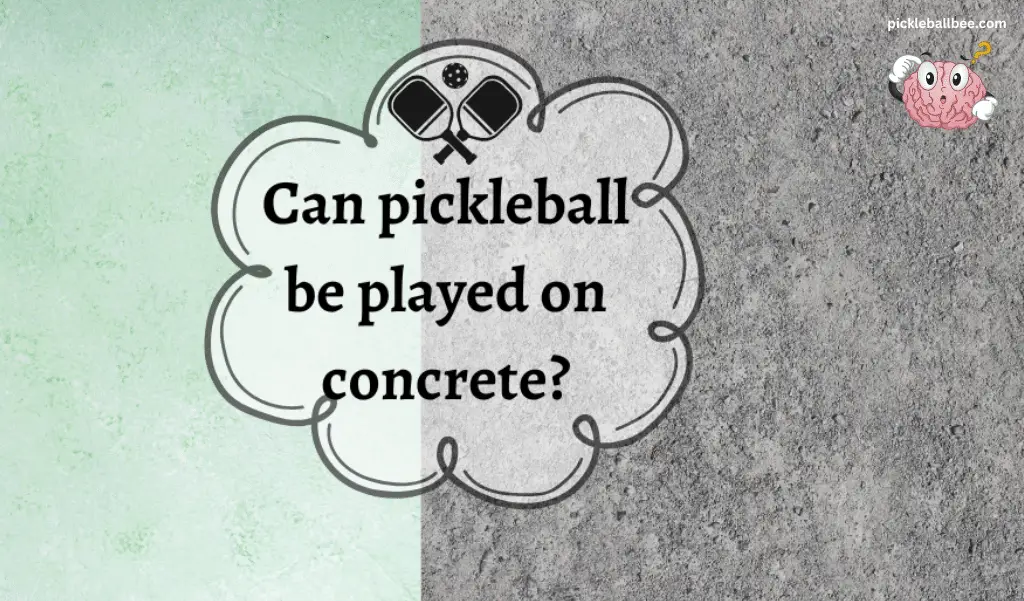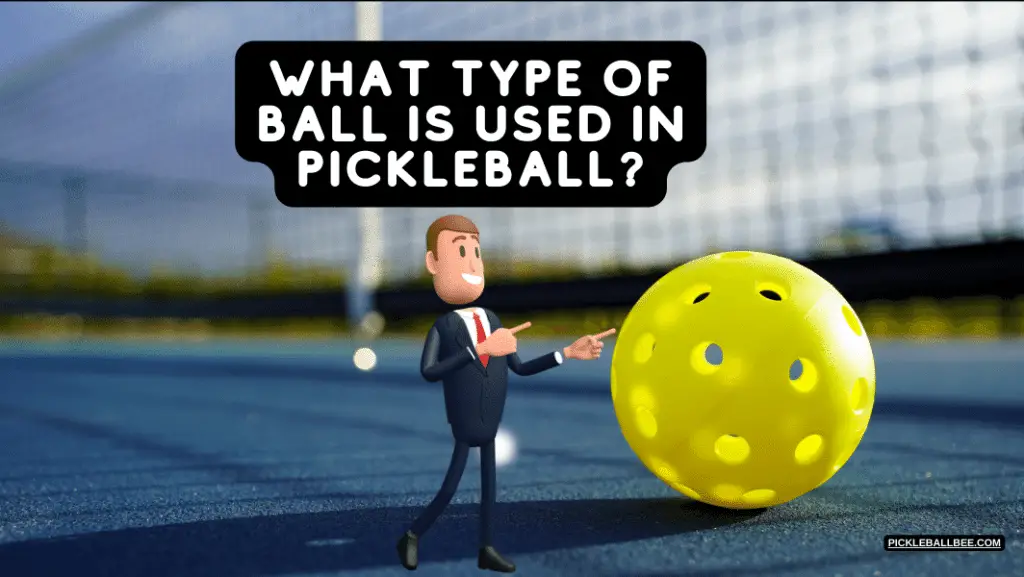
In the dynamic world of Pickleball, understanding the ball's specifics is essential. The game predominantly uses a round, perforated ball, crafted from plastic. Reminiscent of a baseball in size, these balls possess a smooth surface. Ball is used in Pickleball Integral to their design, they feature between 26 and 40 holes. These holes must be evenly spaced, ensuring consistent performance across various courts.
Table of Contents
Ball is used in Pickleball : Pickleball Ball Varieties
In Pickleball, the choice of ball varies based on playing conditions. There are both outdoor and indoor pickleballs, each tailored to their environment. Outdoor balls are slightly heavier than their indoor counterparts, offering better playability in the wind. This subtle weight difference impacts the ball’s flight and behavior, making the game adaptable to both indoor and outdoor settings.
The Evolution of Pickleball: From Wiffle to Modern
Tracing the origins of pickleball, it’s fascinating to discover that the original ball was, in fact, a Wiffle ball. This early iteration of the game was casually played on an old badminton court, utilizing ping pong paddles and the iconic, lightweight wiffle ball. As the sport evolved, so did its equipment, but the modern ball used in pickleball still bears a significant resemblance to its Wiffle ball roots. This adaptation illustrates how the game has maintained its original charm while adapting to competitive play.
The Official Standards of Pickleball Balls
According to the USA Pickleball Equipment Standards Manual, the game of pickleball requires the use of specially approved balls that conform to official rules. These standards are critical in ensuring fair play and maintaining the integrity of the sport. Here’s a breakdown of what makes a pickleball unique:
- Material: A pickleball is made of a durable plastic material, ensuring longevity and consistent performance.
- Surface: The ball’s surface is smooth and free from texturing, which influences the ball’s flight and bounce.
- Size: Official pickleballs are regulated in size, measuring between 2.87 and 2.97 inches in diameter.
- Weight: The weight of a pickleball falls between 0.78 and 0.935 ounces, a factor that affects its speed and handling.
- Color and Design: While they can be any uniform color—typically yellow, orange, or white—an approved pickleball features 26 to 40 circular holes for aerodynamic purposes.
Understanding the Varieties of Pickleball Balls
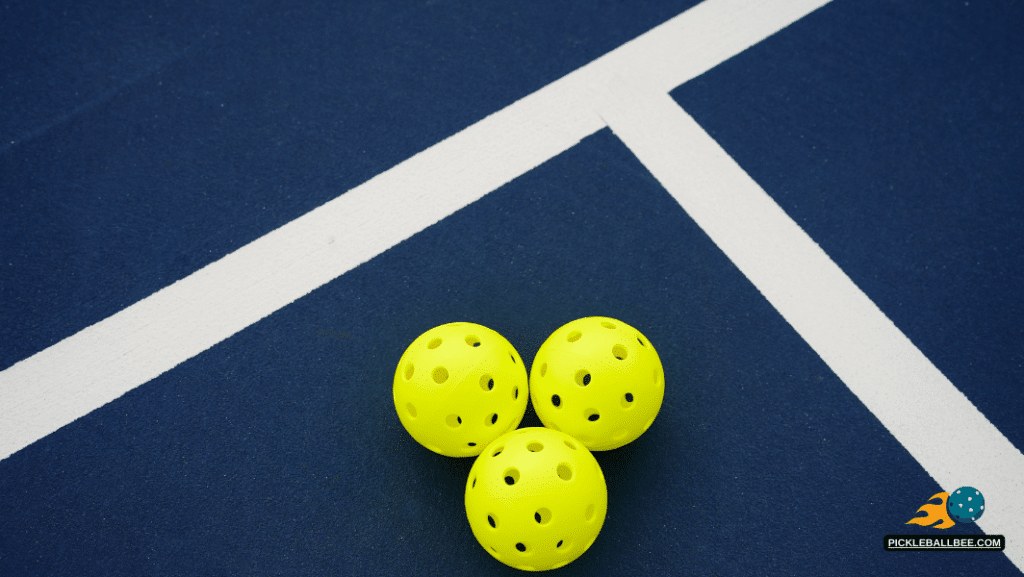
In the competitive and fast-paced world of Pickleball, understanding the ball’s characteristics is crucial for both players and tournament organizers. The decision on the type of ball used often shapes the game’s dynamics:
Varieties of Pickleball Balls:
Players have a choice between two distinct varieties of balls: indoor and outdoor. Indoor balls are softer, with larger holes, enhancing control and spin but making them harder to smash. This leads to longer rallies and a more exciting game. Outdoor balls, contrastingly, are heavier and harder, designed with smaller holes to be less affected by wind, making them louder and easier to smash but with a shorter lifespan due to abrasive playing surfaces.
Indoor Ball Characteristics:
The indoor pickleball balls are crafted for precise control and enhanced spin, offering players the ability to engage in strategic plays. Their softer nature and larger holes make them a preferable choice for those seeking finesse over power in their game.
Outdoor Ball Dynamics:
In contrast, outdoor pickleball balls are tailored for a more robust style of play. Their heavier and harder composition, coupled with smaller holes, allows them to withstand windy conditions better and supports powerful smashes, although at the cost of a shorter lifespan due to rougher playing surfaces.
Pickleball vs. Wiffle Ball: The Subtle Differences
Wiffle balls and pickleballs share many similarities, such as being almost identical in size and made from the same light, durable plastic material. This makes them both popular choices in recreational games, known for their resilience and lightweight feel.
Yet, there are a few key distinctions. Pickleballs are characterized by their circular holes, which differ from Wiffle balls that have eight slots on each half of the ball, making a total of sixteen slots. This difference in design affects the ball’s aerodynamics and playing style. In the realm of tournament play, official rules for Wiffle Ball state that the balls must be white, which is a stark contrast to pickleball. In pickleball tournaments, multiple colors of balls are acceptable, offering a variety in visual appeal and enhancing the game’s accessibility and enjoyment.
Finding the Perfect Ball
For those delving into the world of Pickleball, discovering the right ball is a crucial step. Pickleballs are readily available at most major sports retailers, providing players with a variety of choices. Furthermore, the convenience of online shopping platforms like Amazon, along with Pickleball Central, a superstore dedicated specifically to pickleball equipment, offers an even wider array. These outlets cater to all levels of players, from beginners to seasoned pros.
You can Check Out the Best Pickleball Ball Here
The second step in this journey involves exploring the offerings from many different manufacturers. With each brand bringing its unique feel and performance, the task of choosing the best one for you can be challenging yet rewarding. The best way to navigate this diversity is to try out a few brands and decide for yourself which suits your playstyle. Whether casual play or gearing up for tournament play, ensuring that your balls conform to official rules is paramount. This personalized approach not only aids in finding your favorite pickleball but also significantly enhances your overall game experience.
Pickleballs Vs Balls in Racquet Sports
Exploring the world of racquet sports reveals fascinating variations in the balls used, particularly when comparing pickleballs to others. Each type of ball is uniquely tailored to its specific sport, impacting how the game is played and experienced.
Pickleballs Vs Tennis Balls
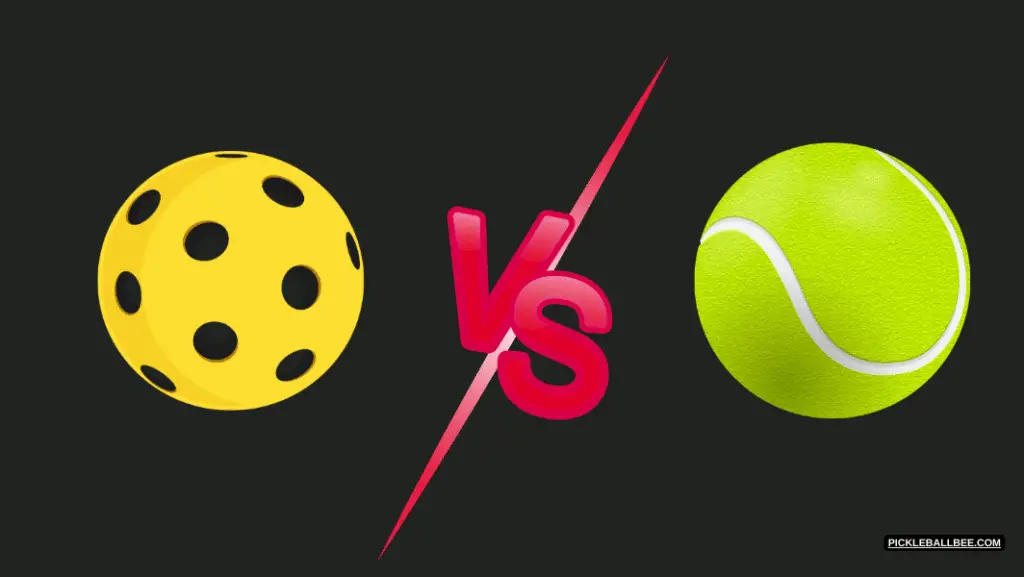
tennis balls stand out with their construction, being made of rubber and felt rather than plastic, which is the common material for pickleballs. Their slightly smaller size compared to pickleballs enables them to move faster through the air, adding a different dynamic to the gameplay. The differences in ball properties are not just about material and size but also relate to the size of the court.
While both tennis and pickleball use courts with similar surfaces, the larger tennis courts require a ball like a tennis ball that can cover longer distances quickly. These variations highlight how each sport’s distinctness is accentuated by the specific type of ball used, influencing the pace and style of the game.
Pickleballs Vs Squash Balls
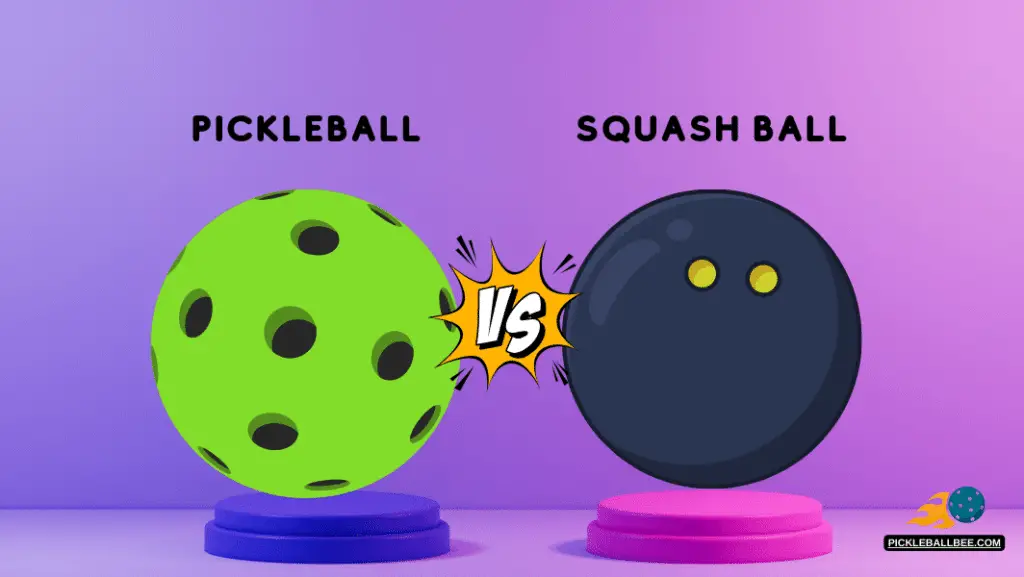
When diving into the world of racquet sports, the comparison between pickleballs and squash balls reveals intriguing differences. Although squash balls are made of the same material as racquetballs, their smaller size sets them apart, leading to distinct gameplay experiences.
This smaller size of squash balls means they move faster and bounce less, making squash a more rapid and challenging game compared to pickleball or racquetball. The speed and reduced bounce heighten the intensity and skill required in squash. In contrast, pickleball, with its larger ball size, offers a different rhythm and strategy, catering to a variety of player skills and preferences. The distinct characteristics of each ball type highlight how equipment variations can significantly alter the dynamics and appeal of similar sports.
Pickleballs Vs Racquetballs
In the world of racquet sports, the distinction between pickleballs and racquetballs is quite pronounced. Racquetballs, primarily made of rubber, resemble the core of a tennis ball sans the felt covering. This gives them a distinct bouncier and softer feel compared to the harder plastic of pickleballs. Despite being similar in size, these two types of balls offer different playing experiences.
The rubbery nature of racquetballs enables them to move faster through the air and provides a higher bounce, attributed to their lack of holes. This contrasts with pickleballs, which are designed for a different type of gameplay, uniquely balancing speed and control. This comparison highlights how small variations in equipment can significantly alter the dynamics of similar sports.
You can Also Chech Best Pickleball Uppers
Conclusion:
In summary, pickleball uses a distinctive type of ball that differs from those in similar racquet sports. Made of a light, plastic material with a specific number of holes, pickleball balls are unique in their design and function. They are not as bouncy or fast as balls used in sports like tennis or racquetball, but they serve well for the specific requirements of pickleball gameplay. While other sports balls vary in materials and sizes, the pickleball remains consistent with its standard design, making it suitable for the unique style of play that pickleball offers.
FAQs:
What ball is used in most pickleball tournaments?
When it comes to pickleball tournaments, the Dura Fast 40 pickleball reigns supreme as the preferred choice across the country. Known for being the most time-tested and consistent ball in the sport today, it has established a solid reputation for quality and performance. This ball has been the official ball multiple times at prestigious events like the US Open and Nationals, underscoring its widespread acceptance in the professional circle. Its regular use in tournaments all around the country further solidifies its position as the top choice for competitive pickleball players, making the Dura Fast 40 synonymous with high-level play.
What is the difference between yellow and orange pickleballs?
Yellow and orange pickleballs mainly differ in their visibility. Yellow balls are often preferred for indoor play due to their high contrast against typical court colors, making them easier to see. Orange pickleballs, on the other hand, are better suited for outdoor play, especially in bright conditions, as they stand out against varied outdoor backgrounds. Both colors are designed to enhance visibility for players, but the choice largely depends on the playing environment and personal preference.


